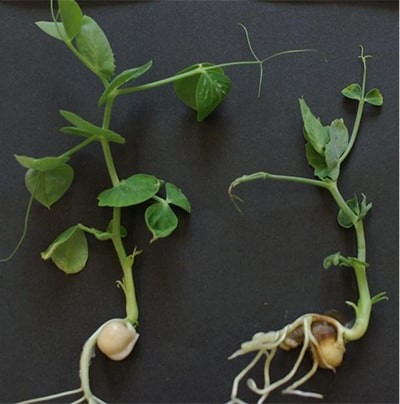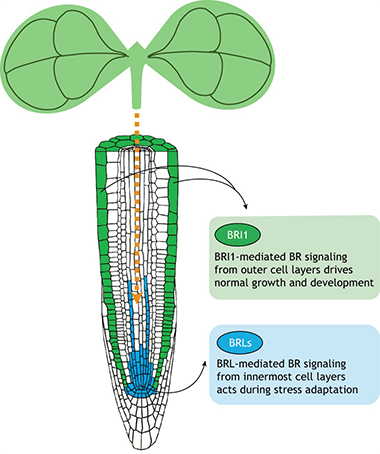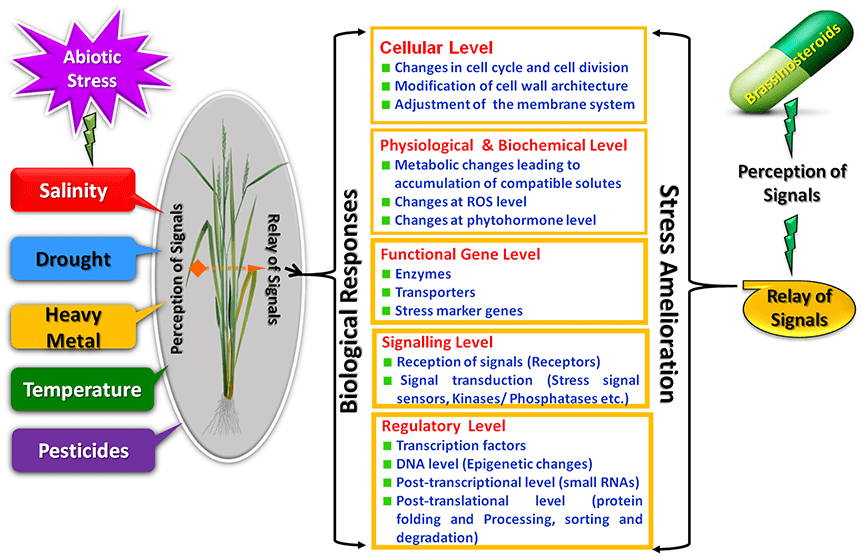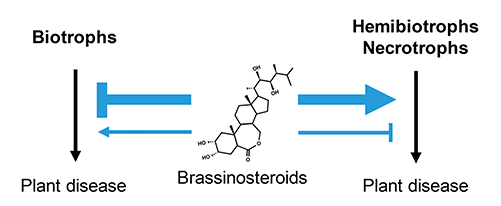Brassinosteroids: Fit and Advantages in Modern Agriculture
Brassinosteroids (BRs) are growth hormones from the steroid family that are found in all plant species. They have a high-growth promoting activity, particularly in pollen and anthers, and take their name from the pollen of canola (Brassica napus), where they were initially discovered. BRs are involved in the control of cell division, elongation and differentiation throughout the growing season and are crucial for plant growth and development. And, acting as growth regulators, they are essential to many responses to stress.
Brassinosteroids and Their Various Roles in Plants
BRs play many roles in plants at both the cellular and whole plant level. (Table 1)
At the cellular level, BRs are involved in increasing chlorophyll content and promoting photosynthesis and carbon fixation. They also affect the amino acid composition in proteins and the protein spectrum, as well as a wide range of molecules involved in oxidative stress. This affects activity of enzymes, as well as protein-protein and protein interactions with nucleic or fatty acids. At the plant level, BRs have been shown to alter growth and development and enhance yield and quality of seed and produce.
| Cellular level | Whole plant level |
|---|---|
| Effect on the protein spectrum and the amino acid composition of proteins | Effect on the content of nutritive components and fruit quality improvement; dry matter increase |
| Increases chlorophyll content and promotes photosynthesis, hence enhancing the carbohydrate biosynthesis in plants and increasing sugar content | Effect on contents of dry matter, carbohydrates, sugar, vitamins; total dry matter increase |
| Stimulation of elongation and fission | Growth promotion |
| Effect on hormonal balance | Increase in the success of fertilization |
| Effect on enzyme activity; H+ -pump activation | Shortening the period of vegetative growth |
| Activation of protein and nuclear acid synthesis | Size and quantity of fruits will increase |
| Effect on the fatty acid composition and properties of membranes | Increased resistance to unfavorable environmental factors, such as stress and diseases, and enhanced storage of fruits |
| Increased photosynthetic capacity and translocation of products | Quality and yield rise |
| Enhanced activity of SOD in the leaves of plants; more H+ ions released from the leaves, which can minimize osmosis and protect cell membranes | Enhanced defense system and immunity of plants, as well as storage of fruits |
Brassinosteroid Signaling in Plant Development and Adaptation to Stress
Unlike animals, plants are immobile and have a unique ability to adapt rather extremely quickly to sudden changes in their environment. Chemical messengers, such as BRs, are phytohormones that get activated by stimuli (e.g. light, temperature and moisture) to trigger the necessary changes and activate responses, resulting in an altered growth and development (Figure 1).


BRs are the main components of the so-called canonical BR signaling pathway that has been discovered through extensive genetic and biochemical screening. Many questions remain unclear, including how BRs function in a cell-specific manner; how the BR pathway interacts with other hormonal pathways under normal and environmentally challenging scenarios; and in which tissues BR synthesis occurs.
Over the past few decades, BR hormones have been shown to be essential for cell elongation and, as such, initial studies on hypocotyl elongation have been very rewarding in terms of understanding the transcriptional responses that trigger elongation (Figure 2). However, since the discovery that BRs also play a role in cell division, studies have switched focus to understanding how BRs modulate growth and development in plants.

During periods of abiotic stress, BRs have the ability to act at lower concentrations to regulate cell division and elongation and can alter biochemical and signaling pathways to trigger biological responses to salinity, drought, herbicide damage, fluctuation of temperatures and accumulation of heavy metals (Figure 3).

In rice, for example, a number of metabolic pathways and transcription factors involved in salt, cold, heat and drought tolerance were identified and characterized (Figure 4).

Brassinosteroids and Plant Diseases
Brassinosteroids also have the ability to modulate plant interactions with all three types of trophic pathogens – biotrophs, necrotrophs and hemibiotrophs. (See 21st Century Guidebook to Fungi for more information.)
Biotrophs, such as bacteria, Septoria, rust, powdery mildew and Phytophtora, prefer feeding on their host while alive, while necrotrophs, such as Pyrenophora repentis-tritici (Tan spot), Fusarium sp., Rhizoctobia sp. and Botrytis cinerea, often kill the tissues of their host and feed on the dead organic matter. The hemibiotrophs – Sclerotinia sclerotiorum and Leptosphaeria maculans (Blackleg), for example – often start their cycle as biotrophs and switch to a necrotrophic mode at a later stage.
BRs appear to induce resistance to most biotrophs and susceptibility to most necrotrophs and hemibiotrophs (Figure 5)

How Can OMEX Help?
OMEX offers Primers, Starters, Foliars, PGRs, Biologicals and Biostimulants, which have been designed to prevent or correct deficiencies to help optimize growth and development in ideal and less-than-ideal conditions, along with standalone Brassinosteroids and a range of products formulated with BRs to help various crops overcome stress.
Talk to your local ag retailer or contact your OMEX representative to learn more about how a plant and soil nutrition program that includes OMEX products can preserve the yield and quality of your crops, helping you grow the best crop possible.
